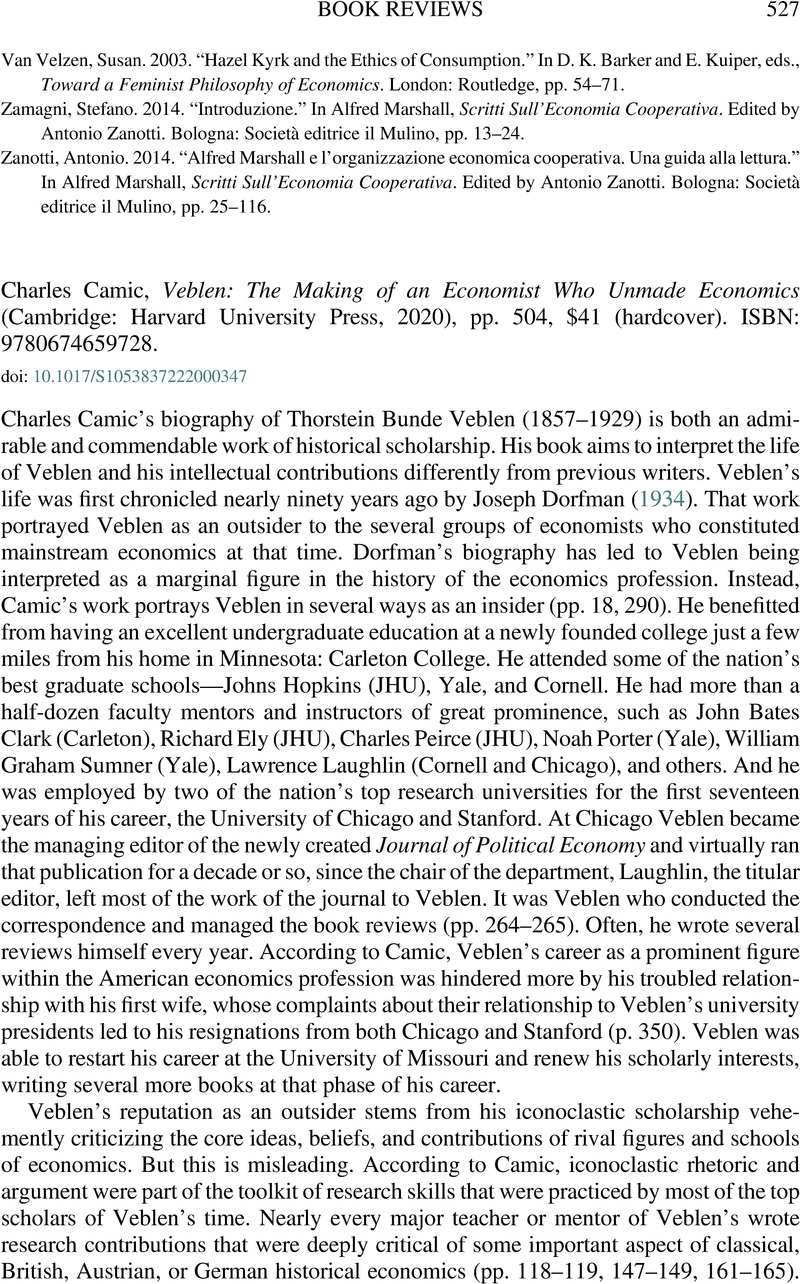No CrossRef data available.
Article contents
Charles Camic, Veblen: The Making of an Economist Who Unmade Economics (Cambridge: Harvard University Press, 2020), pp. 504, $41 (hardcover). ISBN: 9780674659728.
Review products
Charles Camic, Veblen: The Making of an Economist Who Unmade Economics (Cambridge: Harvard University Press, 2020), pp. 504, $41 (hardcover). ISBN: 9780674659728.
Published online by Cambridge University Press: 28 February 2023
Abstract
An abstract is not available for this content so a preview has been provided. Please use the Get access link above for information on how to access this content.

- Type
- Book Review
- Information
- Copyright
- © The Author(s), 2023. Published by Cambridge University Press on behalf of the History of Economics Society
References
REFERENCES
Peirce, Charles S. [1877–78] 1984. “Illustrations of the Logic of Science.” Six articles in Writings of Charles S. Peirce: A Chronological Edition. Volume 3, 1872– 1878 [many editors]. Bloomington: Indiana University Press, pp. 242–338.Google Scholar
Peirce, Charles S. [1891–92] 2010. “The Monist Metaphysical Project.” Five articles in Writings of Charles S. Peirce: A Chronological Edition. Volume 8, 1890–92 [many editors]. Bloomington: Indiana University Press, pp. 83–205.Google Scholar
Peirce, Charles S. [1898] 1992. Reasoning and the Logic of Things: The Cambridge Conference Lectures of 1898. Edited by Ketner, K. L.. Cambridge: Harvard University Press, 1992.Google Scholar
Veblen, Thorstein. 1898. “Why is Economics Not an Evolutionary Science?” Quarterly Journal of Economics 12 (4): 373–397.CrossRefGoogle Scholar
Wible, James R. 2021. “Why Economics is An Evolutionary, Mathematical Science: How Could Veblen’s View of Economics Have Been So Different than C. S. Peirce’s?” Journal of the History of Economic Thought 43 (3): pp. 350–377.CrossRefGoogle Scholar


